The Florida Museum research building hosts a rotating exhibit highlighting recent student research guided by a Florida Museum mentor. Posters are on display at Dickinson Hall for one semester and then permanently archived on this website.
Contact information for current Museum graduate students is available on the Graduate Student Directory, through links to the University of Florida departments, or via the Florida Museum mentors.
Click any poster to download the PDF.
Fall 2015
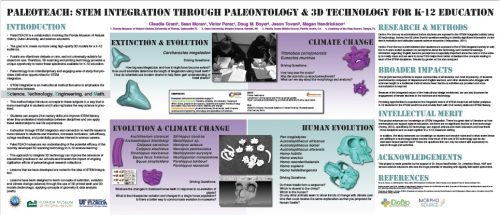 PaleoTEACH: stem integration through paleontology & 3D technology for K-12 education
PaleoTEACH: stem integration through paleontology & 3D technology for K-12 education
Student Authors: Claudia Grant1, Sean Moran1, Victor Perez1, Doug M. Boyer2, Jason Tovani3, Megan Hendrickson4
Florida Museum Research Mentors: Bruce MacFadden, Dr. Jonathan Bloch
1Florida Museum of Natural History, University of Florida. Gainesville FL; 2Duke University, Morpho Source. Durham, NC; 3Pacific Grove Middle School. Pacific Grove, CA; 4Academy of the Holy Names. Tampa, FL
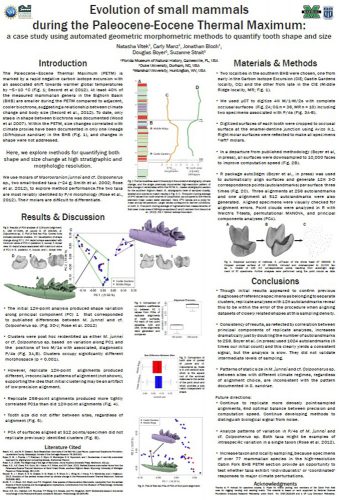 Evolution of small mammals during the Paleocene-Eocene Thermal Maximum: A case study using automated geometric morphometric methods to quantify tooth shape and size
Evolution of small mammals during the Paleocene-Eocene Thermal Maximum: A case study using automated geometric morphometric methods to quantify tooth shape and size
Student Authors: Natasha Vitek1, Carly Manz1, Jonathan Bloch1, Douglas Boyer2, Suzanne Strait3
Florida Museum Research Mentors: Bruce MacFadden, Dr. Jonathan Bloch
1Florida Museum of Natural History, Gainesville, FL; 2Duke University, Durham, NC; 3Marshall University, Huntington, WV
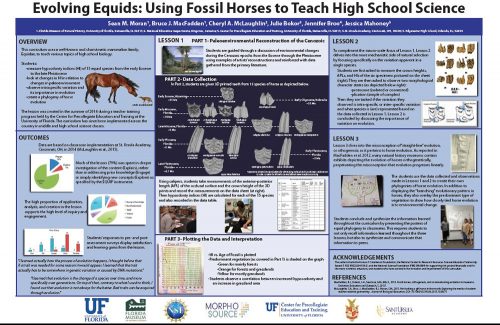 Evolving Equids: Using Fossil Horses to Teach High School Science
Evolving Equids: Using Fossil Horses to Teach High School Science
Authors: Sean M. Moran1, Bruce J. MacFadden1, Cheryl A. McLaughlin2, Julie Bokor3, Jennifer Broo4, Jessica Mahoney5
1Florida Museum of Natural History, University of Florida, Gainesville, FL; 2National Education Inspectorate, Kingston, Jamaica; 3Center for Precollegiate Education and Training, University of Florida, Gainesville, FL; 4St. Ursula Academy, Cincinnati, OH; 5Edgewater High School, Orlando, FL
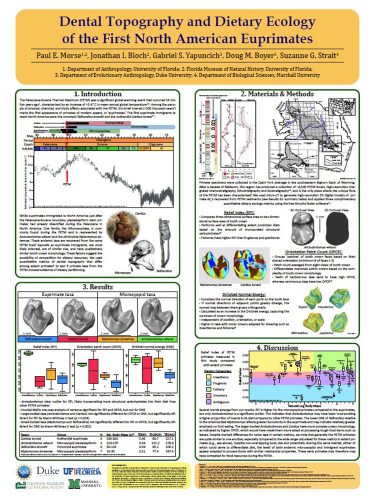 Dental Topography and Dietary Ecology of the First North American Euprimates
Dental Topography and Dietary Ecology of the First North American Euprimates
Authors: Paul E. Morse1,2, Jonathan I. Bloch2, Gabriel S. Yapuncich3, Doug M. Boyer3, Suzanne G. Strait4
1Department of Anthropology, University of Florida; 2Florida Museum of Natural History, University of Florida; 3Department of Evolutionary Anthropology, Duke University; 4Department of Biological Sciences, Marshall University
Spring 2015
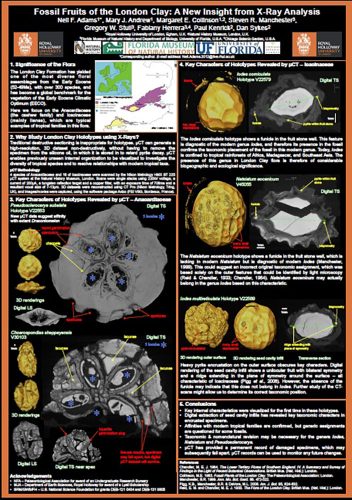 Fossil fruits of the London Clay: A new insight from X-Ray analysis
Fossil fruits of the London Clay: A new insight from X-Ray analysis
Authors: Neil F. Adams1*, Mary J. Andrew1, Margaret E. Collinson1,2, Steven R. Manchester3, Gregory W. Stull3, Fabiany Herrera3,4, Paul Kenrick2, Dan Sykes2
1Royal Holloway University of London, Egham, U.K.; 2Natural History Museum, London, U.K.; 3Florida Museum of Natural History and Department of Biology, University of Florida, U.S.A.; 4Chicago Botanic Garden, U.S.A.
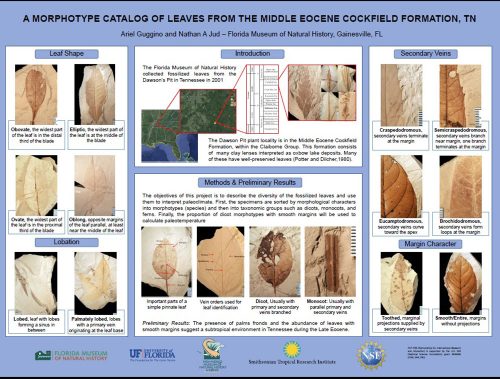 A morphotype catalog of leaves from the Middle Eocene Cockfield Formation, TN
A morphotype catalog of leaves from the Middle Eocene Cockfield Formation, TN
Student Authors: Ariel Guggino and Nathan A Jud
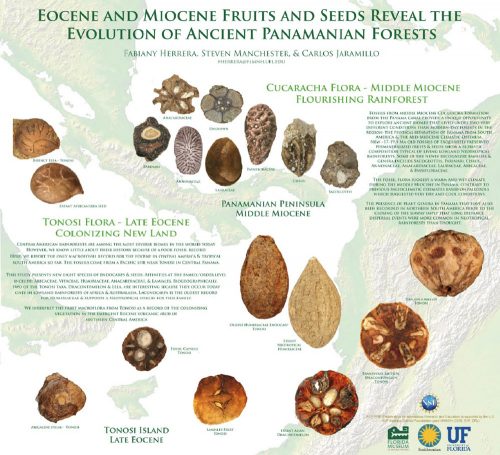 Eocene and Miocene fruits and seeds reveal the evolution of ancient Panamanian forests
Eocene and Miocene fruits and seeds reveal the evolution of ancient Panamanian forests
Student Author: Fabiany Herrera
Florida Museum Research Mentors: Steven Manchester and Carlos Jaramillo
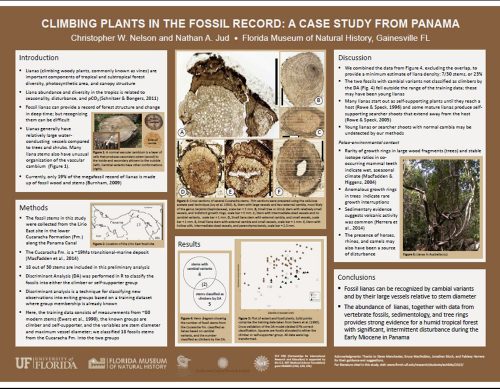 CLIMBING PLANTS IN THE FOSSIL RECORD: A CASE STUDY FROM PANAMA
CLIMBING PLANTS IN THE FOSSIL RECORD: A CASE STUDY FROM PANAMA
Student Authors: Christopher W. Nelson and Nathan A. Jud
Florida Museum Research Mentors: Steve Manchester, Bruce MacFadden, Jonathan Bloch, and Fabiany Herrera